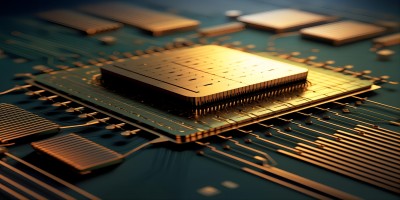Recently, the trade disputes between China and the United States have been escalating continuously, bringing varying degrees of impact to many enterprises. However, with its in-depth layout and strategic vision over several years, Jinshengyang has successfully transformed its domestic supply chain.
In April 2025, Cao Jun, the sales manager of Guangzhou Jinshengyang Power Supply in the South China region, disclosed the company's development situation in the recent year to the media at CITE 2025. He admitted that the company is now mainly focusing on "localization", among which AI data centers and low-altitude economy are the key areas that the company pays close attention to.
We began to lay out the domestic supply chain in 2018
Recently, the trade disputes between China and the United States have been escalating continuously, bringing varying degrees of impact to many enterprises. However, with its in-depth layout and strategic vision over several years, Jinshengyang has successfully transformed its domestic supply chain. This move enabled Kim Seung-yang to demonstrate strong stability and adaptability when facing the complex international situation.
According to Cao Jun's introduction, Jinshengyang began its domestic production layout with foresight as early as 2018. After years of efforts and development, the domestic production rate of its products has now reached 80% to 90%. With this solid foundation, the company has sufficient confidence and strength in terms of localization to deal with the current situation and is not worried about the continuous development of the localization business.
He also pointed out that localization provides domestic suppliers and brands with opportunities to make mistakes. Since 2018, we have encountered many problems during the process of localization. For instance, after switching from Infineon's MOS to domestic MOS, compatibility issues occurred at the end users due to parameter differences. But it is precisely these trial-and-error experiences that have enabled our product to go through multiple rounds of optimization and now it has become stable. Completing the trial-and-error process ahead of schedule has enabled us to identify development opportunities under the trend of localization. Currently, the overall performance of our products is stable, which also gives us an edge in market competition.
Compared with the time when it first started to lay out domestic production in 2018, Jinshengyang has now felt significant progress in the domestic supply chain. According to Cao Jun's introduction, in the past, many foreign materials were hard to find substitutes for. Sometimes, for a single material, three or four domestic brands had to be introduced for testing, but none of them passed because the company's material introduction had to go through strict testing. Nowadays, the alternative supply of materials has improved significantly, with more choices and simplified processes. This progress is attributed to the support of the state, such as the information technology innovation Project and the clearing Project. The government and party sectors have taken the lead in achieving domestic independent control. The domestic production requirements in industries such as communications, rail transit, and power have brought development opportunities to the company and the industrial chain, forming a powerful driving force.
Domestic brands should support each other
It is worth noting that for manufacturers, during the process of supply chain switching from imported components to domestic supply chains, costs have not decreased; instead, they may even increase. Cao Jun said that many customers have a misunderstanding that switching to domestic production means a reduction in costs, but this is not the case. For instance, when Huawei launched the Mate60, its cost actually rose, which indicates that in the early stage of domestic substitution, the cost reduction was not significant.
There are mainly two reasons for this phenomenon: First, the domestic supply chain is in the trial-and-error stage. When the input and output of suppliers are unclear in the early stage, they will allocate the development costs to the material prices. Secondly, the technological maturity and production process level of domestic materials still have a gap compared with imported materials. This leads to the fact that some high-end materials, such as high-power surface mount MOS and small-volume large-capacity financing capacitors, have higher costs after being replaced by domestic ones. However, for materials in the highly competitive red ocean market, the cost advantage of domestic production does exist. But for core materials, domestic substitution faces a higher cost.
For the domestic market, Jinshengyang has always regarded innovation as its top priority, adhering to a customer demand-oriented approach, deeply understanding the demands of various industries, and focusing on addressing industry pain points. Only by addressing the pain points of the industry can one gain a foothold in the market. Cao Jun emphasized, "Our goal is to develop products based on domestic market demand, rather than simply following or replacing the gap left after foreign brands exit the Chinese market."
Take the chip industry chain as an example. Although China has made progress in recent years, for instance, Xinkailai, which went viral in March this year, has successively released 31 new devices. The efforts it has made behind the scenes are worth paying attention to. According to Cao Jun, Jinshengyang has also cooperated with Xinkailai. The investment of such domestic companies is very large, and Jinshengyang is willing to support its supply chain. Domestic brands should support each other instead of blindly engaging in price competition; otherwise, it will lead the entire industry into a vicious circle.
Increase investment in AI data centers and low-altitude economy
In the past year, Jinshengyang has made many breakthroughs in technology. Firstly, in terms of high power density development, the company is committed to enhancing the power density of its products to meet the market's demand for miniaturized and high-performance products. Secondly, the development of independent ics is also an important direction, which helps to enhance the competitiveness of products and the control over core technologies. Thirdly, the domestic production layout was promoted in 2018, which is in line with the current market environment of trade wars and the demand for independent control. Currently, it has been applied in multiple industries. These breakthroughs not only enhance the quality and performance of the products, but also help the company expand its market and strengthen its influence in the industry.
Against this backdrop, at the CITE 2025 exhibition, Jinshengyang not only showcased traditional DC/DC and AC/DC products, but also highlighted three new products - the first one is a small-sized non-isolated PSiP(a packaging technology that integrates multiple power management chips together) solution developed for the low-altitude economy; The second one is the high-voltage DC rail-mounted power supply PVI series; The third type is the chip-type low ripple current product, with a ripple as low as one millivolt. Specifically, currently, Jinshengyang is actively expanding in emerging fields, with a focus on AI data centers and the low-altitude economy sector. In the field of AI data centers, the company focuses on developing high-efficiency power supply products in response to its core pain points - energy consumption and heat dissipation. For instance, its platinum-titanium AI server power supply can effectively reduce energy consumption and enhance heat dissipation efficiency to meet the strict power supply requirements of data centers. "Regarding the power supply for AI servers, our development focus is on enhancing the dynamic load response capability of the power supply to meet the rapidly changing power supply requirements when AI servers process big data," said Cao Jun. For low-altitude economy, the newly launched power supply products feature small size, light weight and high efficiency, which can extend the battery life. Especially in airborne applications, Kingsun has optimized the EMC performance to ensure the stability and reliability of wireless control for unmanned aerial vehicles. Meanwhile, the company also has mature solutions in ground control equipment and signal transmission equipment. Looking ahead, Jinshengyang will focus on achieving dual breakthroughs in both performance and technology. According to Cao Jun's disclosure, "In the next three to five years, the company will focus on achieving dual breakthroughs in performance and technology, and is committed to building a hundred-billion-yuan enterprise." The company's technological development will revolve around five core points, including enhancing the power density of power supplies and meeting the demands of emerging industries, such as the application of AI server computing power. Now, Jinshengyang is working on laying out its product line to adapt to the constantly changing market demands. Meanwhile, the company will also take advantage of the opportunity of localization to gradually improve its industrial chain layout in order to achieve its strategic goals. Cao Jun sighed, "Localization is now a very good opportunity for us."
* Disclaimer: This article is sourced from the Internet. If there is any dispute, please contact customer service.



